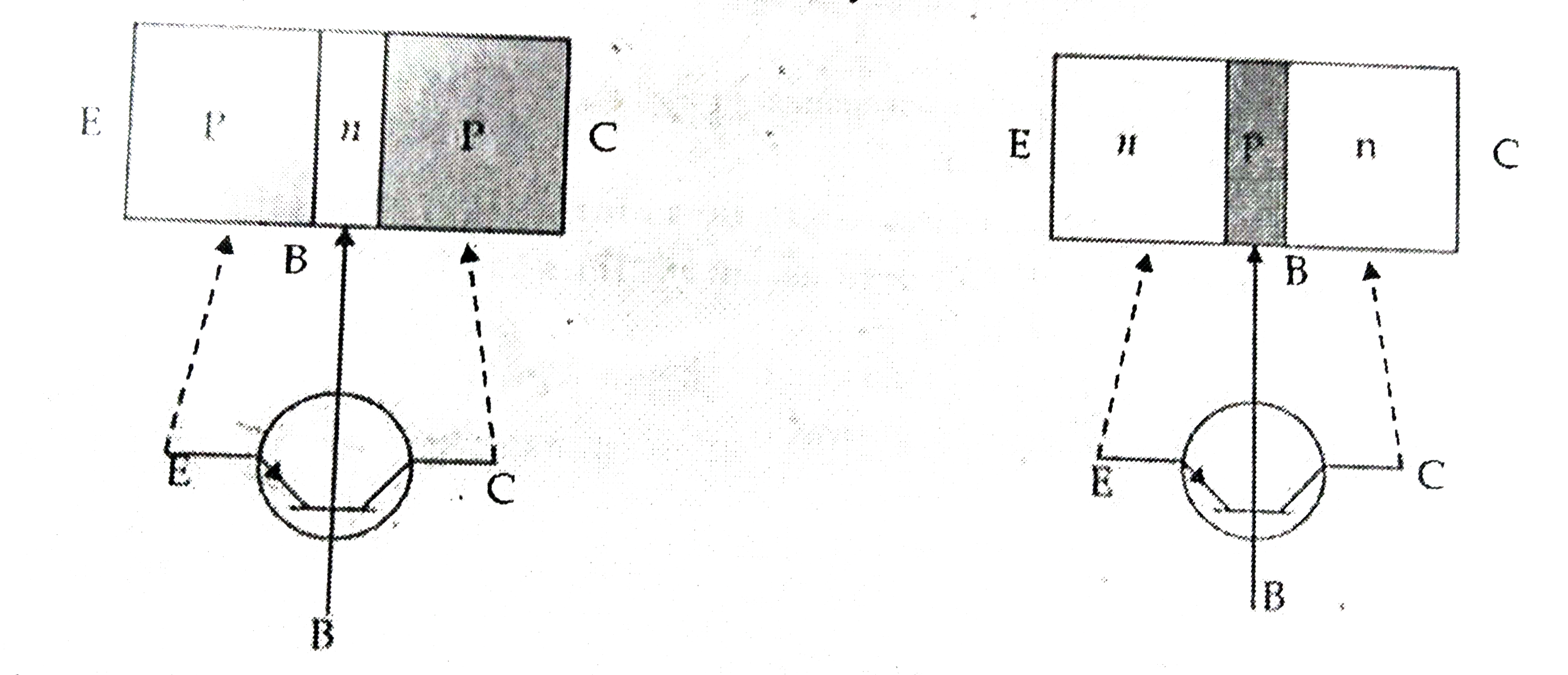InterviewSolution
Saved Bookmarks
| 1. |
(a) Differentiate between three segments of a transistor on the basis of their size and level of dopping. (b) How is a transistor biased to be in active state? (c) With the help of necessary circuit diagram, describe briefly how n-p-n trnasistor in Ce configuration amplifies a small sinusoidal input voltage. Write the expression for the ac current gain. |
Answer» SOLUTION :(a) Emitter (E) : It is the left hand side thick layer of the transistor, which is heavily doped.  BASE (B) : It is the central thin layer of the transistor, which is lightly doped. Collector (C) - It is the RIGHT hand side thick layer of the transistor, which is moderately dope. (b) There are two conditions for a transistor to be into an active region. 1. The input circuit should be forwed biased by using a low voltage battery. 2. The OUTPUT circuit should be reverse biased by using a high voltage battery. (c) C.E. configuration (Transistor as an Amplifier). The current diagram of a common emitter amplifier using n-p-n transistor is shown in Figure.  The input (base-emitter) circuit is forwed biased and the output (collector-emiiter) circuit is reverse blased. When no a.c. signal is applied, the potential difference `V_("CC")` between the collector and emitter is given by `V_("CC")=V_(CB)+I_(C)R_(C)`. When an a.c. signal is fed to the input circuit, the forward bias increases during the positive half cycle of the input. This results in increases in `I_(C)` and decrease in `V_("CC")`. Thus, during positive half cycle of the input, the collector becomes less positive. During the negative half cycle of the input, the forward bias is decreased resulting in decrease in `I_(E)` and hence `I_(C)`. Thus `V_("CC")` would increase making the collector more positive. Hence in a common-emitter amplifier, the output voltage is `180^(@)` out of phase with the input voltage. (i) Input signal voltage `V_(i)=I_(B)R_(B)`. (ii) Output signal voltage `V_(0)=I_(C)R_(C)`. (iii) Voltage gain `(A_(V))` of the amplifier is `A_(V)=(V_(0))/(V_(i))=(I_(C)R_(C))/(I_(V)R_(B))=beta((R_(C))/(R_(B)))...[becausebeta=(I_(C))/(I_(B))]` |
|